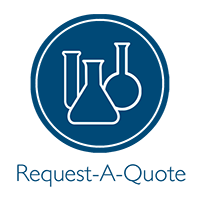This method is used for the determination of polychlorinated dibenzo-p-dioxins (PCDD's) and polychlorinated dibenzofurans (PCDF's) from stationary sources. The PCDDs/PCDFs determined are seventeen 2,3,7,8-substituted isomers considered to be the most toxic. Total PCDDs/PCDFs by congener group (e.g. Total TCDD, PeCDD) are also reported.
Samples are collected isokinetically using a modified Method 5 train which consists of a glass fiber filter containing no organic binders, XAD-2 resin trap, and a series of impingers. The sampling train is rinsed with acetone and/or methylene chloride followed by toluene. Acetone and methylene chloride rinses can be combined but the toluene rinses need to be kept separately. Note that the impinger water may be discarded as it is not extracted and analyzed for PCDDs/PCDFs.
Typically all components of the train, including the rinses, are extracted and combined to produce one extract for analysis which represents the entire sampling train. This extract is then split and 50% of the extract is archived in case there are problems and re-analysis is necessary. PCDDs/PCDFs undergo an extensive cleanup prior to analysis. If there are problems with the cleanup, the archived portion of the sample extract can be processed avoiding the need to resample.
It is worth noting that the method requires the toluene rinse to be prepared and analyzed separately from the other train components (XAD, filter, rinses). However, probably 90% of all projects within the US combine the toluene rinse with the other train components as noted above. If you have any questions regarding the treatment of the toluene rinse, you should consult your regulatory agency.
Method 0023A from EPA's SW-846 is a sampling method for PCDDs/PCDFs similar to 23. However, these methods are not identical. The major difference is that 0023A requires that the front half of the train consisting of the rinses (nozzle, probe, front half filter holder) and filter be extracted and analyzed separately from the back half of the train consisting of the rinses (back half filter holder, condenser coil) and XAD-2 resin.
No Obligation Quotation for Analytical Services
If you would like us to provide a quote for laboratory analysis, just provide us with as much information as you can about your project (the more, the better) and we'll provide you a quote via email. As you are searching or browsing our Analytical Guide, you'll see the Request-A-Quote icon... just click on it to start the request process.
| Hold Times, Preservatives, Preps, Collection, Analytical & Documentation | |
|---|---|
| Holding Time: | XAD must be used within 4 weeks (30 days) of preparation or opening of sealed jar if purchased from supply company. 30 days from sampling to extraction and 45 days from extraction to analysis. |
| Preservatives: | Protect all sample fractions from light. The method does not mention any preservation but if possible, all rinses and the XAD resin should be stored on ice for transport to laboratory (4 °C± 2). |
| Required Preps: | Glass fiber filter free of organic binders and XAD-2 resin |
| Collection Method: | Modified Method 5 train following Method 23 procedures |
| Analytical Methodology: | GC/MS (high resolution) by Method 23 |
| Documentation: | |
| SKU | Item | Price | |
|---|---|---|---|
| M23 | EPA Method 23 Sampling System: Dioxin/Furans | $ Call for Price | |
* The analytes and detection limits listed for each method represent the typical detection limits and analytes reported for that particular method. Keep in mind that analyte lists may vary from laboratory to laboratory. Detection limits may also vary from lab to lab and are dependent upon the sample size, matrix, and any interferences that may be present in the sample.